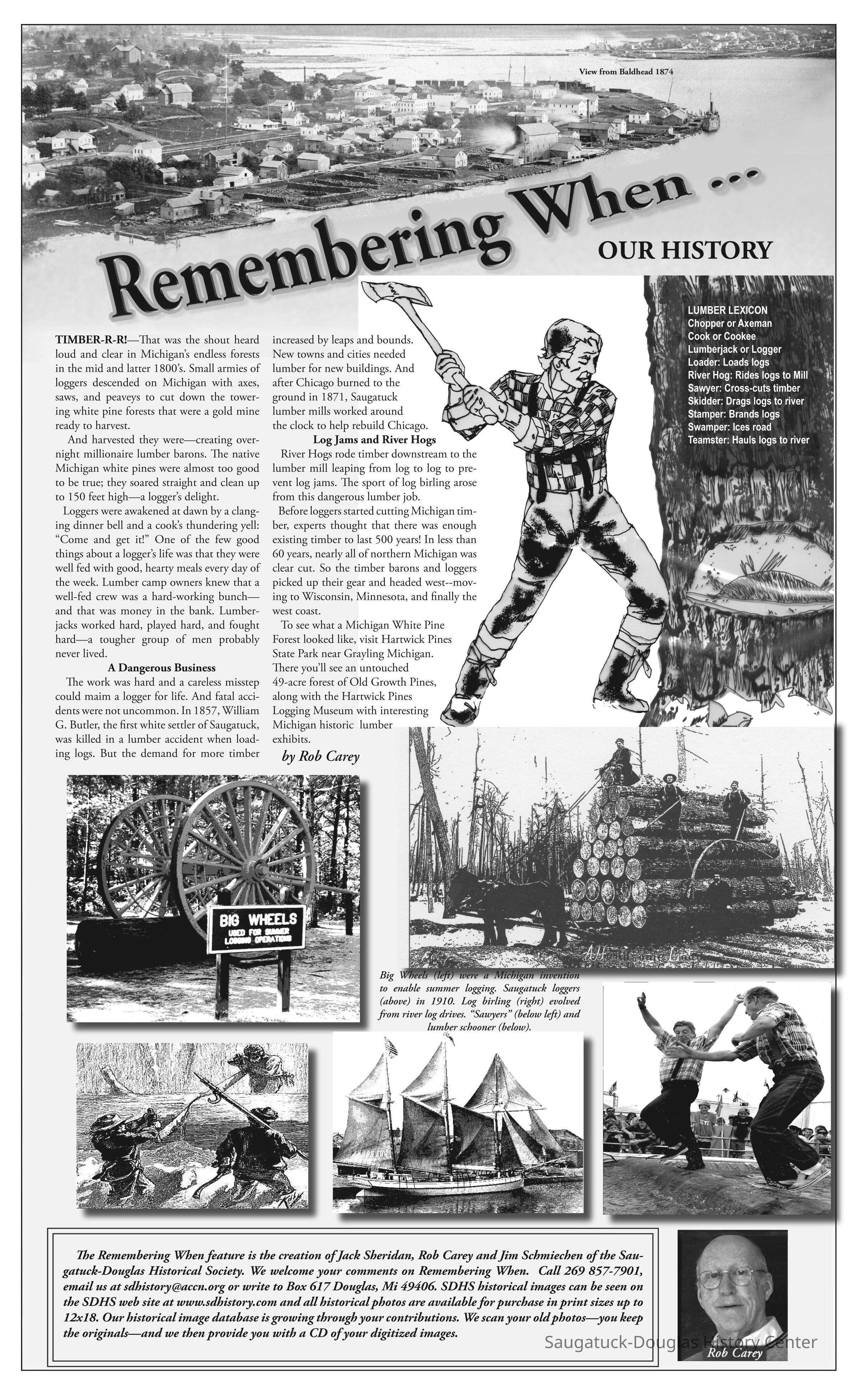Lumbering

2021.87.71
TIMBER-R-R!—That was the shout heard loud and clear in Michigan’s endless forests in the mid and latter 1800’s. Small armies of loggers descended on Michigan with axes, saws, and peaveys to cut down the towering white pine forests that were a gold mine ready to harvest. And harvested they were—creating overnight millionaire lumber barons. The native Michigan white pines were almost too good to be true; they soared straight and clean up to 150 feet high—a logger’s delight. Loggers were awakened at dawn by a clanging dinner bell and a cook’s thundering yell: “Come and get it!” One of the few good things about a logger’s life was that they were well fed with good, hearty meals every day of the week. Lumber camp owners knew that a well-fed crew was a hard-working bunch—and that was money in the bank. Lumberjacks worked hard, played hard, and fought hard—a tougher group of men probably never lived. A Dangerous Business The work was hard and a careless misstep could maim a logger for life. And fatal accidents were not uncommon. In 1857, William G. Butler, the first white settler of Saugatuck, was killed in a lumber accident when loading logs. But the demand for more timber increased by leaps and bounds. New towns and cities needed lumber for new buildings. And after Chicago burned to the ground in 1871, Saugatuck lumber mills worked around the clock to help rebuild Chicago. Log Jams and River Hogs River Hogs rode timber downstream to the lumber mill leaping from log to log to prevent log jams. The sport of log birling arose from this dangerous lumber job. Before loggers started cutting Michigan timber, experts thought that there was enough existing timber to last 500 years! In less than 60 years, nearly all of northern Michigan was clear cut. So the timber barons and loggers picked up their gear and headed west--moving to Wisconsin, Minnesota, and finally the west coast. To see what a Michigan White Pine Forest looked like, visit Hartwick Pines State Park near Grayling Michigan. There you’ll see an untouched 49-acre forest of Old Growth Pines, along with the Hartwick Pines Logging Museum with interesting Michigan historic lumber exhibits. by Rob Carey LUMBER LEXICON Chopper or Axeman Cook or Cookee Lumberjack or Logger Loader: Loads logs River Hog: Rides logs to Mill Sawyer: Cross-cuts timber Skidder: Drags logs to river Stamper: Brands logs Swamper: Ices road Teamster: Hauls logs to river Photo captions: [digital original images not found] Big Wheels (left) were a Michigan invention to enable summer logging. Saugatuck loggers (above) in 1910. Log birling (right) evolved from river log drives. “Sawyers” (below left) and lumber schooner (below).
Remembering When1835 Logging and Lumbering
Winthers, Sally
2021.87
Sheridan, John "Jack" O. 1938-
Donation
Digital data in CatalogIt
Carey, Rob 1928-2019Sheridan, John "Jack" O. 1938-Schmiechen, James A.Butler, William Gay 1799-1857
Chicago, Illinois
Local Observer
01/01/2022
11/18/2023
